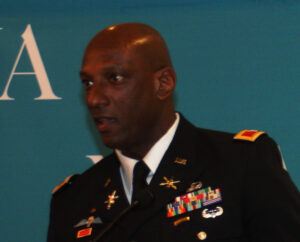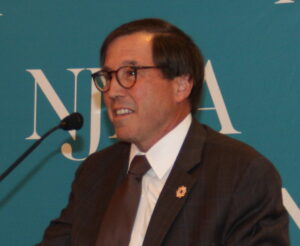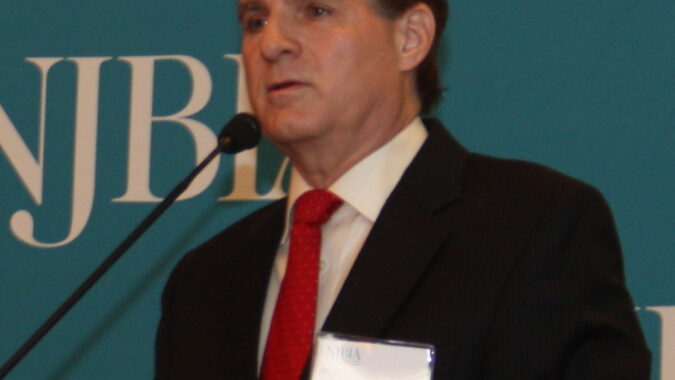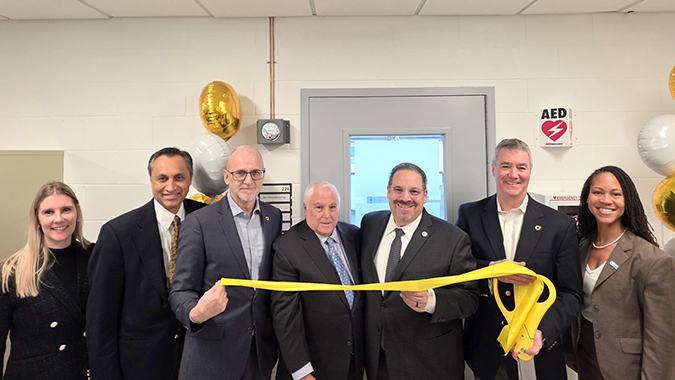Businesses need not be discouraged about the marketplace challenges of the 21st century economy. The innovation they need to take advantage of new technologies and new processes is well within their reach if they are willing to embrace change.

At NJBIA’s Innovation Summit this morning, three long-established companies and the U.S. military showed how they are using innovation to not just survive, but to lead the way for change.
“We are about to go through an era that’s been called disruptive technology,” said Don Sebastian, president and CEO of the NJ Innovation Institute. “The cliff notes version is: You’re likely to become a dinosaur replaced by mammals.”
“We like to think that doesn’t have to be the case,” he said.
Need more? Join NJBIA's Innovation and Technology Policy Network
AB/InBev is a company with a long heritage that is embracing change. This Newark brewery, which can trace its roots back to Ballantine Ale in 1840, has made innovation an essential part of its operations by creating the TechNWK Incubator.
As Director Rama Garikapati explained, the traditional way companies change is too slow. The incubator is a way to leverage how smaller, more nimble organizations take advantage of technology by inviting them to help solve real business problems.

Garikapati said today, consumers are tapping into new technologies much better than big enterprises. For TechNWK, “the thinking was, How do we bring innovation to our day-to-day lives, not what is the next big change or next big product.”
They use the concept of a Hackathon, in which 50 or so companies are invited to work together for two full days of intensive brainstorming. On the next level, there is the Agile Innovative Sprint, where in-house staff joins outside experts for a weeklong project, with the goal of producing a prototype by Thursday. The longest-term projects are under ech Supply Pilot Co-Horts, where the best vendor or solution is matched to strategic problem.
For the U.S. military, innovation is a matter of life and death. Fortunately, we have the ultimate weapon—the U.S. soldier. Col. James E. Martin’s job is to make sure they have the tools that they need.
“We’ve got to change our concept knowing that we won’t necessarily be dominant in any particular domain,” Martin said.

Fort Dix, where Martin is Commander of Army Support Activity, is home to the communications, electronics and engineering arm of the Army’s innovation efforts. They are working on night-vision technology, cybersecurity, countering IEDs, electronic warfare, and surveillance, among other things.
“Soldiers today will have to be skilled in so many areas that previous soldiers didn’t have to be skilled in,” Martin said. “We’ve got to supply those soldiers with the best equipment and the best possible innovation.”
Healthcare in the United States is at both ends of the innovation spectrum. For curing and preventing disease, the U.S. leads the world in innovation and technology, but the way it delivers the care to patients is in desperate need of new thinking.
Under the current system, patients and their insurance companies pay for the doctor visits and medical procedures they receive. That system has given the United States the most expensive healthcare in the world. Americans spend $2.9 trillion a year on healthcare; and nearly one-third of that pays for treatments that are either unnecessary or ineffective.
Dr. Andrew Pecora of Hackensack Meridian Health is on the verge of changing that. His group, Physician Enterprise, is about to launch a new treatment model for breast cancer patients where a care-management team will be responsible for treating the patient and their compensation will be determined by how well they accomplish that goal.

“Instead of paying for processes, instead of paying for doing things, pay for the outcomes,” he said. “How about we pay physicians and hospitals for making your problems go away. And those that do it more efficiently and with greater efficacy and at a lower cost, how about we pay them more.”
His model would pay care management teams to provide “bundles” of care based on the disease and for a pre-determined price that is paid up front. The bundle provides everything needed to treat that condition, and the healthcare provider receives that payment up front and assumes the risk for the cost.
While innovation is associated with high tech, it doesn’t have to be complicated. Stephen Sichak, executive vice president at Becton Dickinson, said simpler solutions are better than complex solutions.
He used the example of medical syringes used to deliver medication. They used to be made of glass and were reusable with a steel needle on the end. BD came up with single-use disposable syringes in the 1960s, but it was still built the same as the old ones, just with plastic.
About 10 years ago, Sichak’s team revised the syringe’s design, creating a new product called Uniject. It’s basically a pouch and a needle that is prefilled with the exact dose of a drug. Once it is used, it is discarded.




